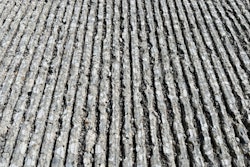
The final phase of the Golden Gate Bridge Seismic Retrofit Construction Project will begin in a few months, strengthening and reinforcing the famous San Francisco span.
Phase 3B, set to begin in early 2026 and conclude in 2036, will be split into two construction manager-general contractor contracts. The first $864 million goes to Halmar International.
The contract will cover pre-construction, including planning access and creating schedules. It will also strengthen the main span between the two towers and the two side spans, as well as reinforce both towers, the tower trusses and the south tower pier. The tower bases will get new steel plates, and expansion joints where the roadway meets the towers will be replaced as well as the pylons to allow three-dimensional movements during earthquakes. The south tower will be repainted above the roadway.
Crews will also reinforce lateral bracing, retrofit 255 floor beans and install 38 energy-dissipation devices to better protect the bridge from seismic energy transference.
Additional work in the first Phase 3B contract will include foundation strengthening, installing micropiles and rock bolts, and building reinforced concrete shearwalls. The Golden Gate Bridge will remain open during the work with nighttime lane closures.
The previous $125 million phase of the Golden Gate Bridge Seismic Retrofit project, 3A, occurred from 2008 to 2014 on the north anchorage housing and pylon N1.
Built from 1933 to 1937, the Golden Gate Bridge measures 1.7 miles between its abutments, with the main span and side spans measuring 1.2 miles. It is the second-longest suspension bridge in the Americas behind New York City’s 2.6-mile Verrazzano-Narrows Bridge.
The bridge currently has a maximum downward deflection of 10.8 feet and a max upward deflection of 5.8 feet.











